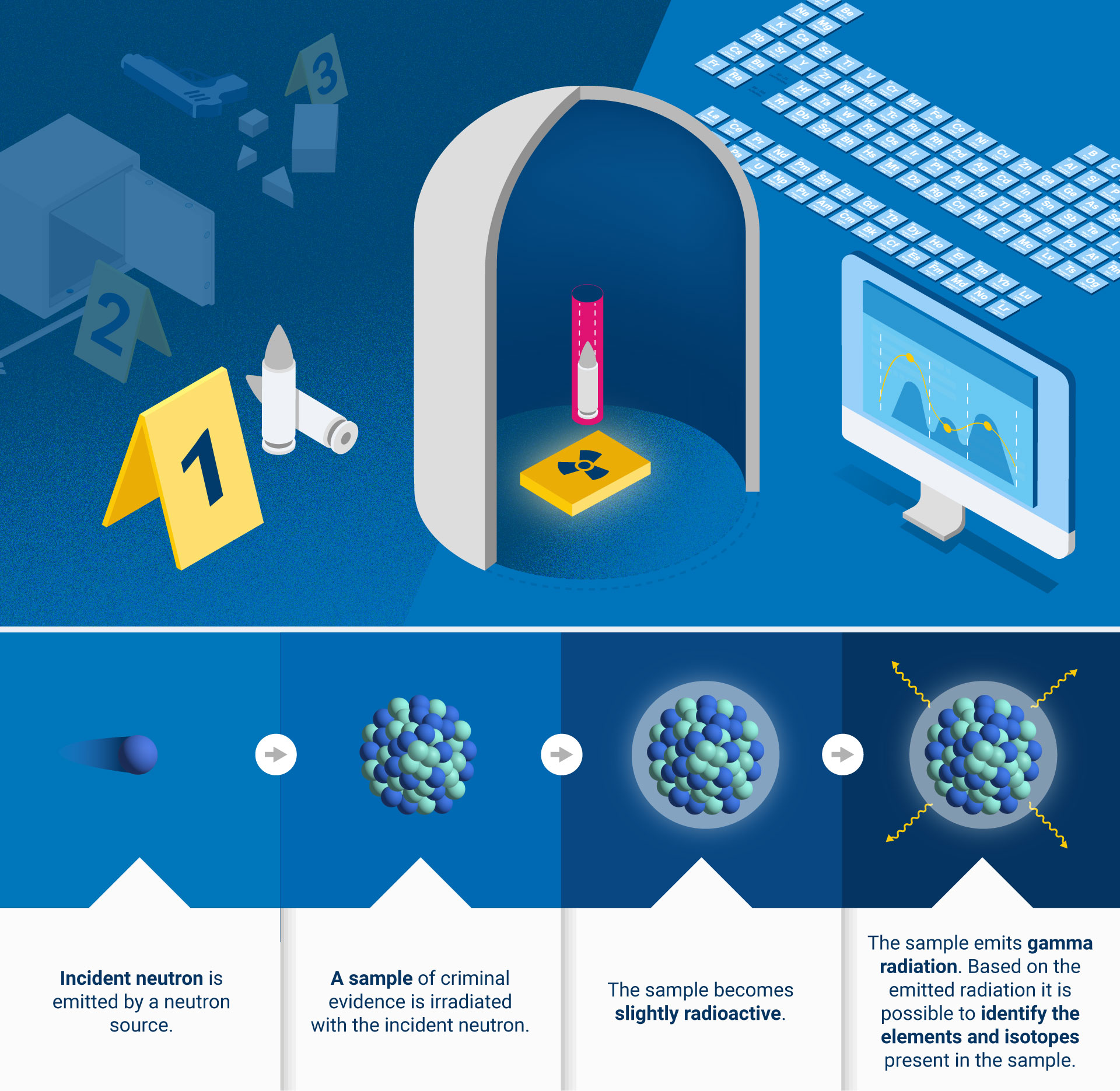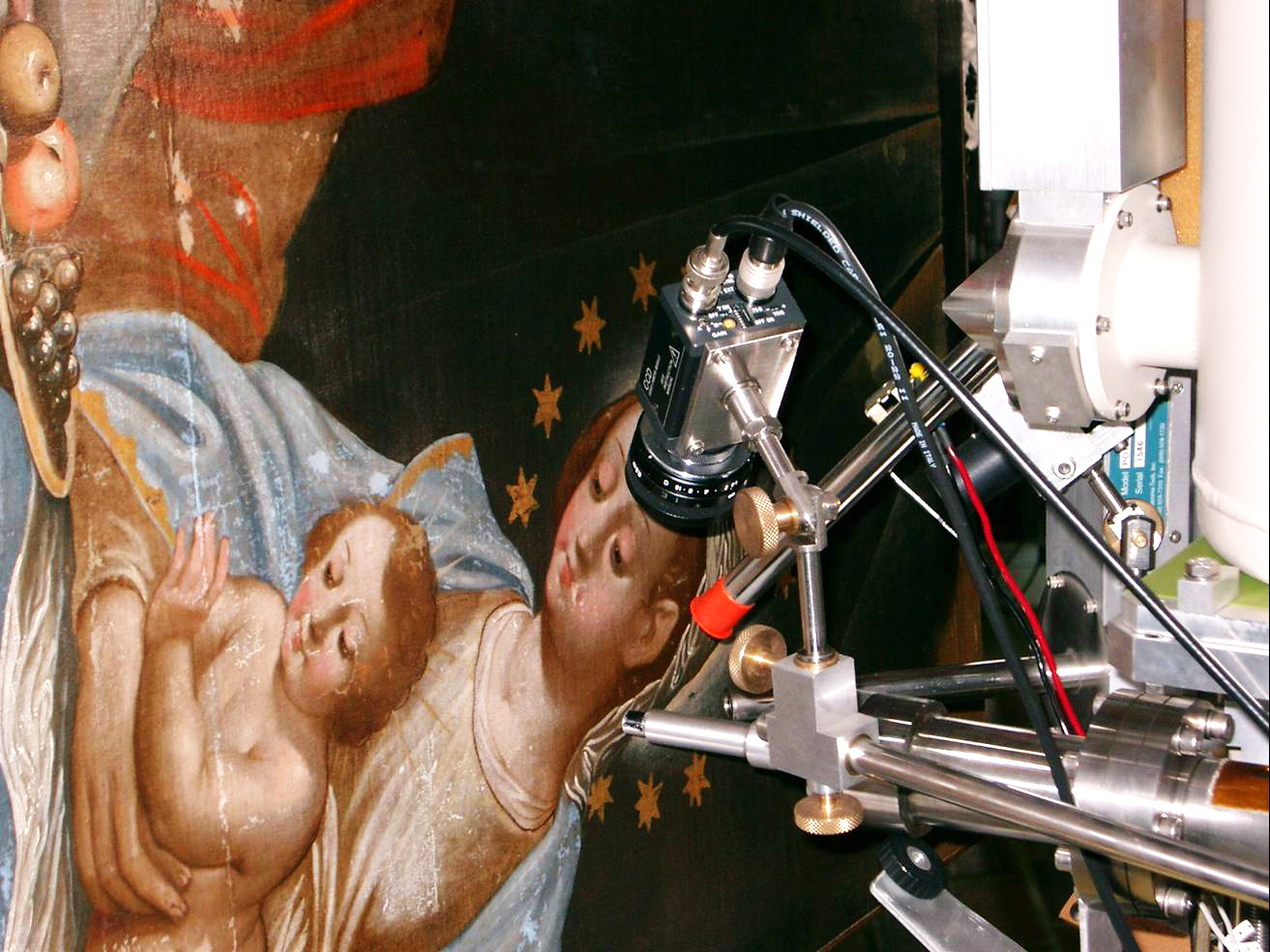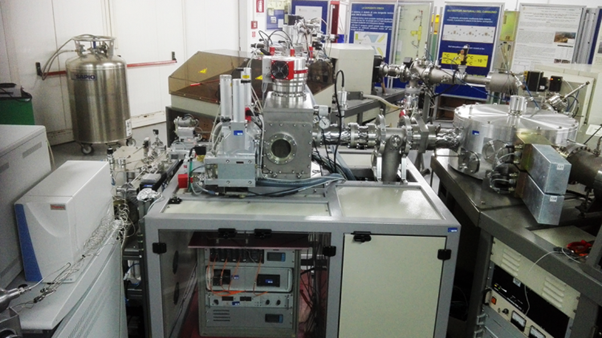Nuclear techniques help to analyze evidence related to crimes, such as glass fragments, bullet casings or traces of soil. Supported with other forensic evidence, such as DNA, these techniques help to identify and prosecute the perpetrators. (Infographic: Maria Platonova/IAEA).
Nuclear techniques can be used to analyse samples of forensic evidence related to crimes — from drug trafficking to murders or art forgeries. X-ray techniques, neutron activation analysis, ion beam analysis and radiocarbon dating are among the most common methods, which can complement more traditional methods in forensic investigations. Through the analysis of the chemical and physical properties of materials, supported with other forensic evidence, such as DNA or fingerprints, these techniques can help link samples of evidence taken at crime scenes to perpetrators.
How Do Nuclear Techniques Help in Investigations?
Nuclear techniques can help specialists analyse microscopic traces of incriminating evidence samples, such as elements in paint or a single hair. This can help to uncover information which could not be discovered otherwise, for example, the true age of forged art pieces or whether an individual was poisoned. Moreover, nuclear techniques are considerably less destructive compared to other methods, such as the use of chemicals for analysis, which can alter the original condition of fragile evidence, for example a tiny shard of glass. Therefore, after being analysed with nuclear techniques, fragile evidence can still be preserved for further analysis.
Other methods
Other common nuclear techniques can also be used in investigations, for example the use of stable isotope analysis for food fraud detection.
Stable isotope analysis is a technique used to determine the origin and authenticity of different foods, enabling specialists to detect and prosecute individuals involved in food adulteration (e.g. selling low-quality food under premium labels for high prices). Stable isotopes can be measured with specialized equipment, which can detect the tiniest differences in the ratios of a chemical element’s light and heavy forms. Such analysis can provide evidence about a particular type of food in order to make sure it is coming from the right region and uses authentic ingredients described on the label (e.g. detecting sugar syrups added to honey).
What is the Role of the IAEA?
- The IAEA contributes to the development and application of novel nuclear techniques for analytical purposes. The Agency develops and delivers innovative nuclear analytical tools and related frameworks to support the needs of different countries.
- Using its worldwide network of national nuclear laboratories, the IAEA provides concrete tools to forensic experts and investigators through its Technical Cooperation Programme and Coordinated Research Projects.
- The IAEA provides e-learning courses, focusing on the application of nuclear techniques in the field of Cultural Heritage and Forensic Sciences.
- Through its Coordinated Research Projects (CRP) the IAEA studies how nuclear analytical techniques can be used to obtain information on food origin and authenticity, to assess art authenticity and to analyse evidence in crime scenes.
- The IAEA also supports countries by providing technical assistance on forensics capacity building in the form of trainings, residential assignments, scientific advisories and consultations.
- The IAEA is working to bridge the gap between scientists, law enforcement and the forensic community to improve prevention and countering of criminal activities around the world using nuclear science and technology.
- The IAEA produces published materials to spread awareness about the use of different nuclear techniques and benefits they bring for investigations and detection of fraud.
- The IAEA is working with other UN organizations like UNODC, UNICRI, UNIDO, FAO, and other international partners to foster nuclear analytical techniques for forensic applications.
This article was first published on 21 July, 2023
Source : https://www.iaea.org/newscenter/news/how-do-nuclear-techniques-help-crime-investigations















0 nhận xét:
Đăng nhận xét